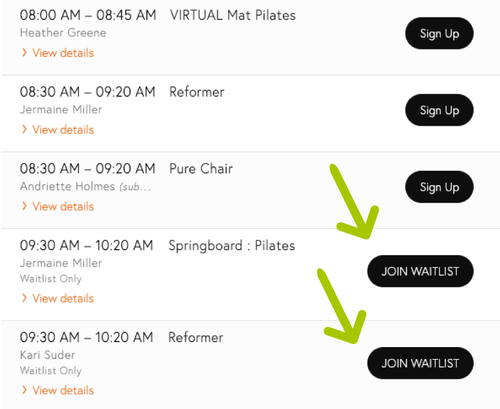Ultimate Guide to Making Your Fitness Studio Website Accessible for All
In today’s digital age, having a website for your fitness studio is essential. However, simply having a website isn’t enough. It must be accessible to everyone, including people with disabilities. An accessible website ensures a smooth user experience for all visitors, whether they are visually impaired, hearing impaired, or have mobility issues. By making your fitness studio’s website accessible, you not only create an inclusive experience but also improve your site’s search engine rankings, reach more potential clients, and reduce the risk of legal issues.
In this guide, we’ll explore why accessibility matters, the common challenges faced by fitness studio websites, and actionable steps to make your site accessible to all.
Why Website Accessibility Matters
Website accessibility is no longer just a “nice-to-have” feature—it’s a necessity. According to the World Health Organization (WHO), over 1 billion people worldwide live with some form of disability. This means a significant portion of the global population may struggle to navigate websites that are not designed with accessibility in mind.
The Business Case for Accessibility
Besides the ethical and legal aspects, improving accessibility can benefit your fitness studio’s business in several ways:
- Increased Reach: By making your website more accessible, you open the doors to a broader audience, including people with disabilities.
- Improved SEO: Accessible websites often perform better on search engines. Features like alt text for images, descriptive link text, and proper HTML structure enhance your website’s SEO, helping you rank higher on Google.
- Enhanced User Experience: Accessibility features like easy navigation, readable text, and proper contrast improve the overall experience for all users, making your site more engaging.

Common Accessibility Issues in Fitness Studio Websites
Many fitness studio websites, whether large or small, suffer from similar accessibility problems. These issues can prevent users with disabilities from accessing important information, booking classes, or engaging with your studio online.
1. Lack of Text Alternatives (Alt Text) for Images
Fitness studio websites often have a lot of images to showcase their facilities, instructors, and classes. However, without descriptive alt text, visually impaired users who rely on screen readers will miss out on this content.
2. Inaccessible Forms and Booking Systems
Many fitness studios use online booking systems to allow clients to schedule classes. If these forms aren’t accessible (e.g., missing labels, hard-to-navigate interfaces), people with disabilities might struggle to book a class.
3. Poor Color Contrast
Fitness websites often use bright colors to create a vibrant, energetic feel. However, low-contrast color schemes can make it difficult for users with visual impairments to read the text or navigate buttons.
4. No Keyboard Navigation
Some users, especially those with mobility impairments, may not be able to use a mouse. Your website must be navigable using only a keyboard, but many fitness websites overlook this crucial accessibility feature.
5. No Captions or Transcripts for Video Content
Video content is a great way to promote your fitness studio, but without captions or transcripts, hearing-impaired users may miss out on key information. This is especially important if your website includes instructional videos or class previews.

How to Make Your Fitness Studio Website Accessible
Now that we’ve outlined the common challenges, let’s explore how to make your fitness studio website more accessible. The goal is to create a seamless user experience for everyone, regardless of their abilities.
1. Add Descriptive Alt Text for Images
Ensure that all images on your site include alt text—a brief, descriptive text that explains what’s in the image. This allows visually impaired users to understand what’s being displayed through screen readers.
- Example: Instead of using alt text like “yoga class,” a better description would be “Group of people practicing yoga in a bright, airy studio.”
2. Use Accessible Forms and Booking Systems
Make sure your booking system and any forms (like contact forms) are accessible. Here are a few key points:
- Label all form fields clearly.
- Ensure form navigation is easy via keyboard.
- Provide error messages that are clear and accessible to screen readers.
You can test your forms for accessibility using tools like WAVE, which helps identify any barriers.
3. Ensure Proper Color Contrast
To ensure your text is readable, you need to check the contrast between the text color and background. According to the Web Content Accessibility Guidelines (WCAG), the minimum contrast ratio should be 4.5:1 for normal text. You can use free tools like the Contrast Checker to test your site’s color scheme.
4. Enable Keyboard Navigation
Ensure that all interactive elements on your website, including menus, buttons, and forms, can be accessed using just a keyboard. Users should be able to use the “Tab” key to move through your site’s content easily.
- Solution: Test your website’s keyboard navigation yourself or use screen readers like VoiceOver (for Mac) or NVDA (for Windows) to ensure all elements are accessible.
5. Provide Captions and Transcripts for Videos
For any video content on your fitness studio website, always include captions or provide a transcript. This ensures that hearing-impaired users can still understand the content. Many video hosting platforms like YouTube and Vimeo offer automatic captioning, but it’s important to review and edit these captions for accuracy.
6. Use Clear and Simple Language
Keep your website content simple and easy to understand. Avoid overly complex jargon or lengthy explanations. This is particularly helpful for users with cognitive disabilities or those who are not native English speakers. Write short paragraphs, use bullet points, and break up the text with headers.
- Solution: Test your website’s keyboard navigation yourself or use screen readers like VoiceOver (for Mac) or NVDA (for Windows) to ensure all elements are accessible.

7. Implement Responsive Design
Your website should be mobile-friendly and responsive, meaning it works well on any device, whether it’s a smartphone, tablet, or desktop. Many people, including those with disabilities, use mobile devices to browse the web. Ensure your content adjusts and remains accessible across all devices.
Tools and Resources for Ensuring Website Accessibility
You don’t have to start from scratch to make your website accessible. Here are some tools and resources that can help:
- WAVE: A web accessibility evaluation tool that provides feedback on how accessible your website is.
- Web Content Accessibility Guidelines (WCAG): These guidelines are an essential resource for ensuring your website complies with accessibility standards.
- Accessible WordPress Themes: If you’re using WordPress, many themes are specifically designed with accessibility in mind.
Conclusion: Prioritize Accessibility to Serve a Wider Audience
Making your fitness studio website accessible is a crucial step toward inclusivity and reaching a broader audience. By addressing common accessibility issues—such as adding alt text, improving color contrast, and ensuring keyboard navigation—you can create a better user experience for everyone. Not only will this make your studio more welcoming to people with disabilities, but it can also boost your SEO rankings and improve client engagement.
Take action today by reviewing your website’s current accessibility status and making the necessary changes. The payoff will be well worth it, both for your business and for the diverse community of clients you’ll be able to serve.





